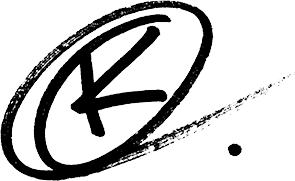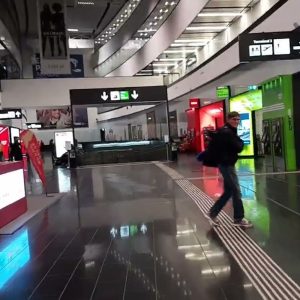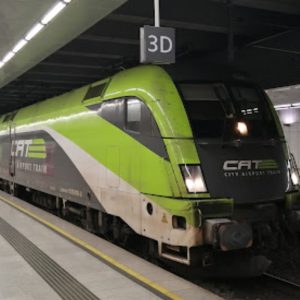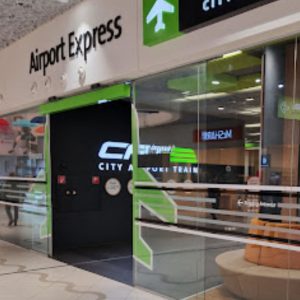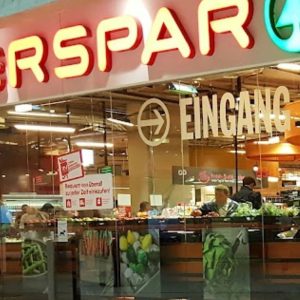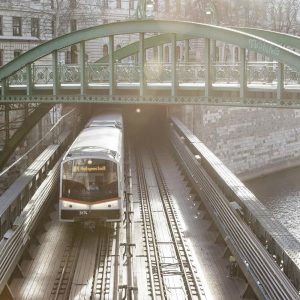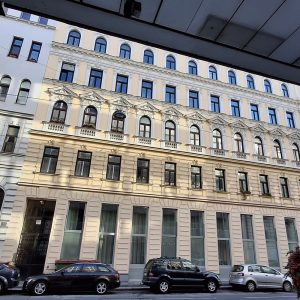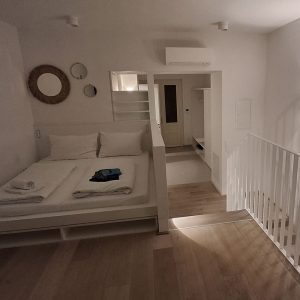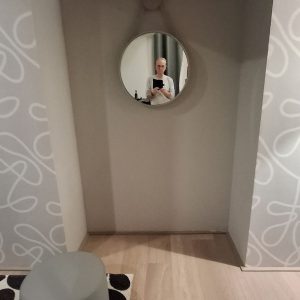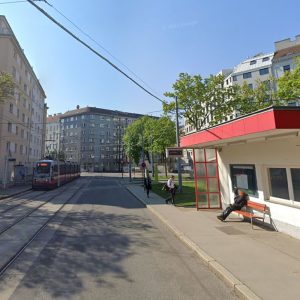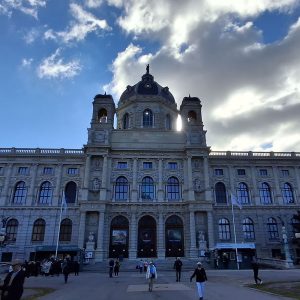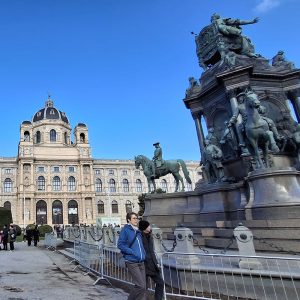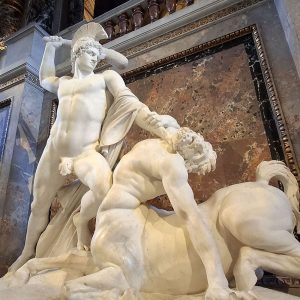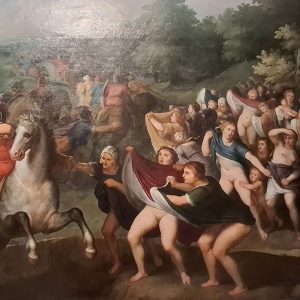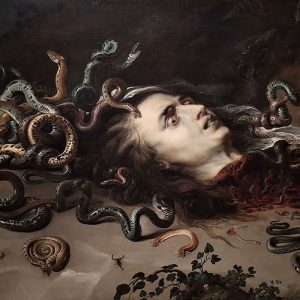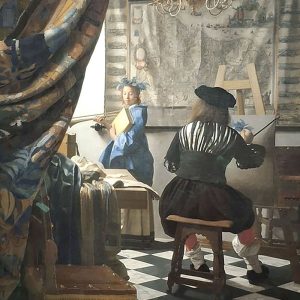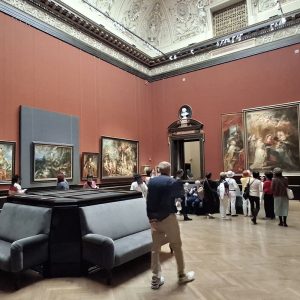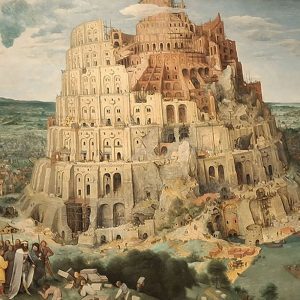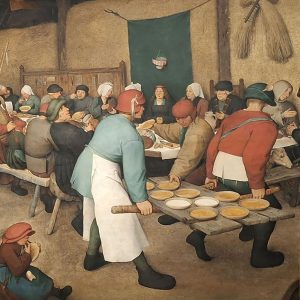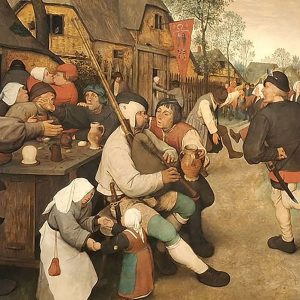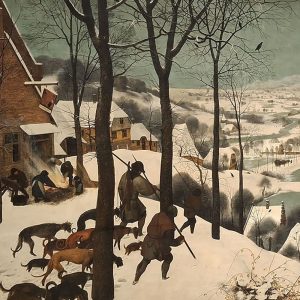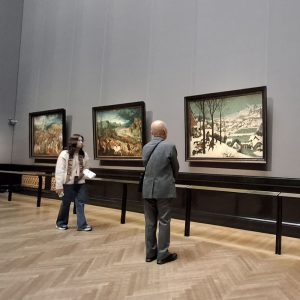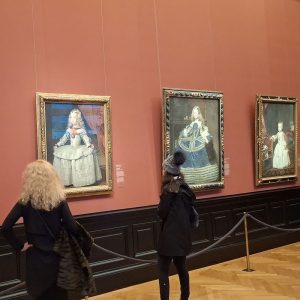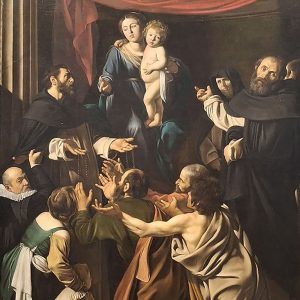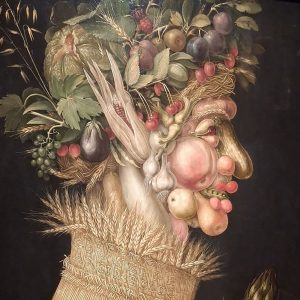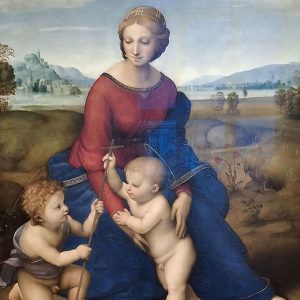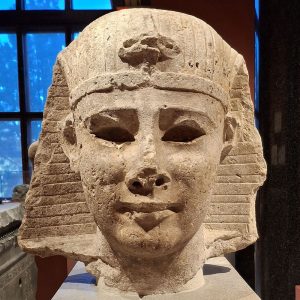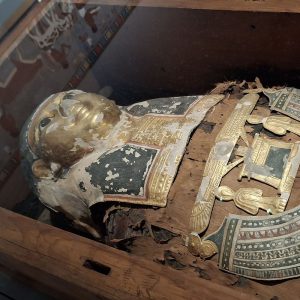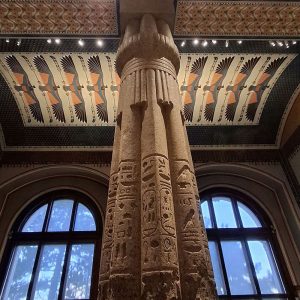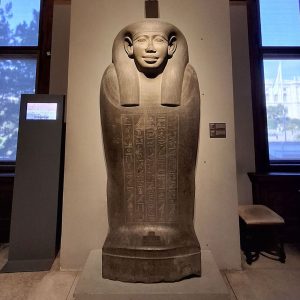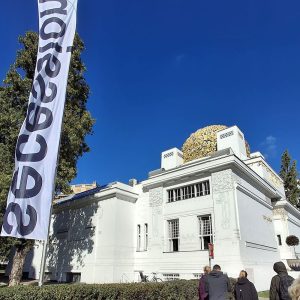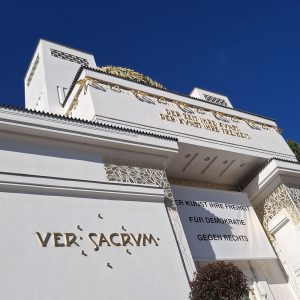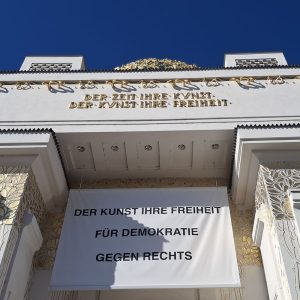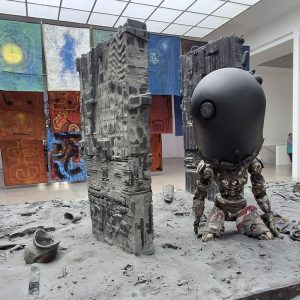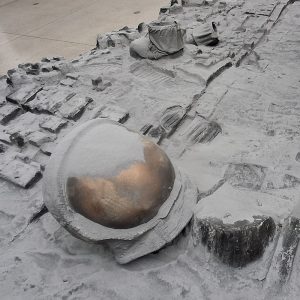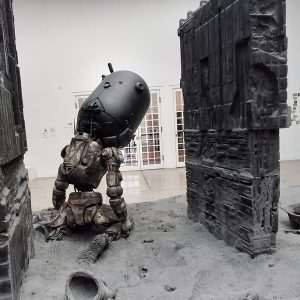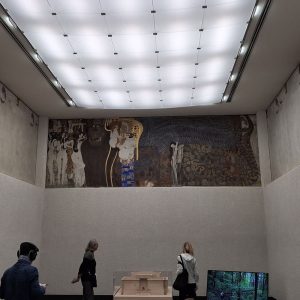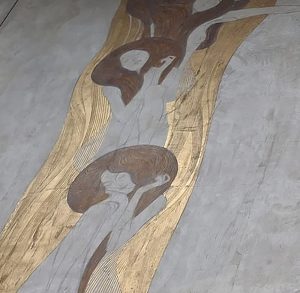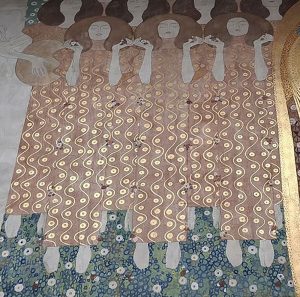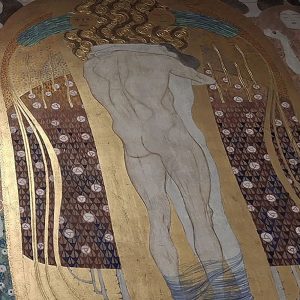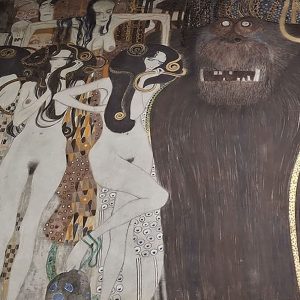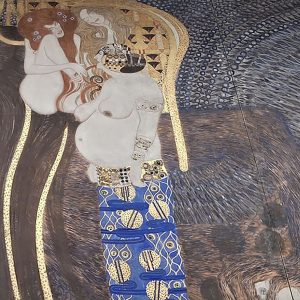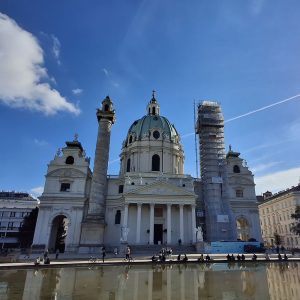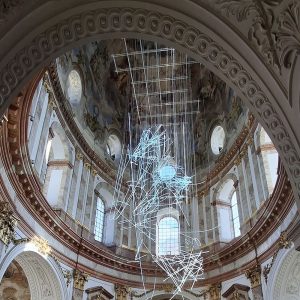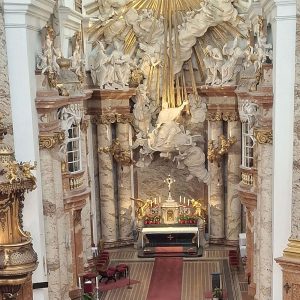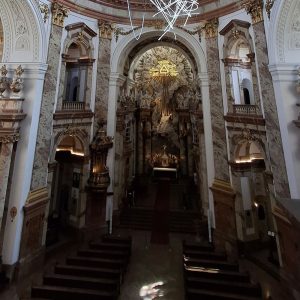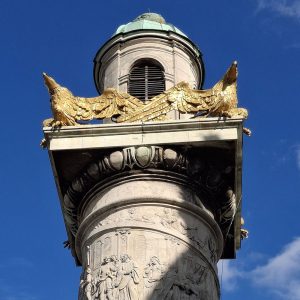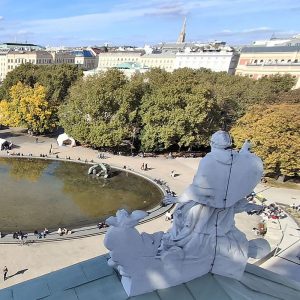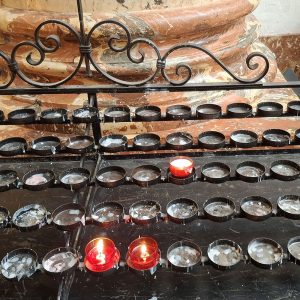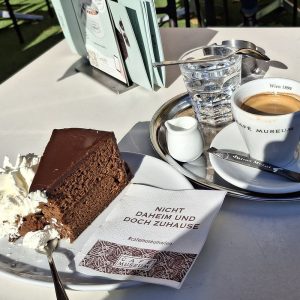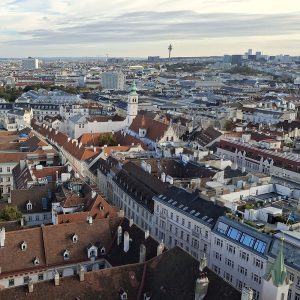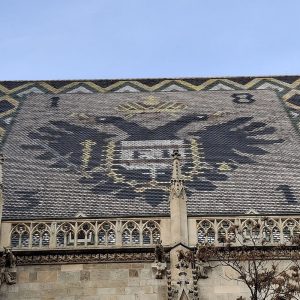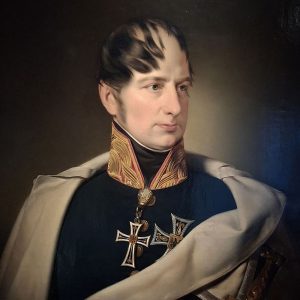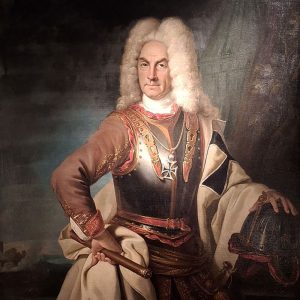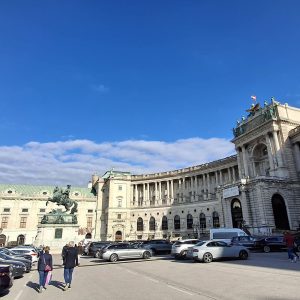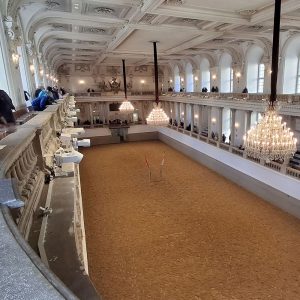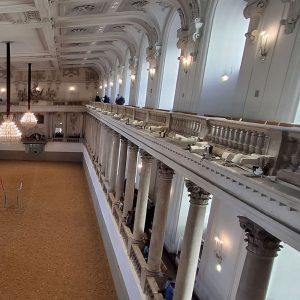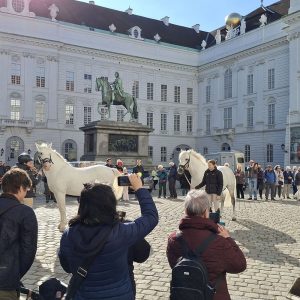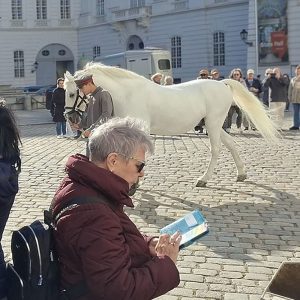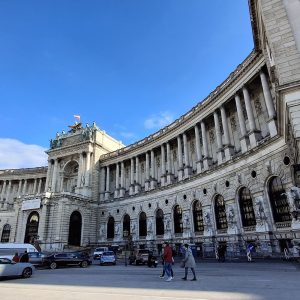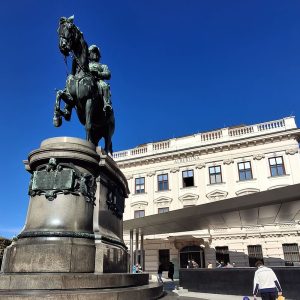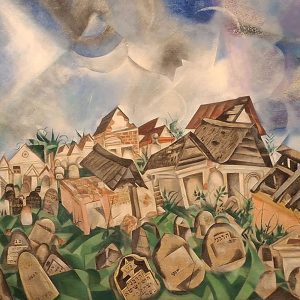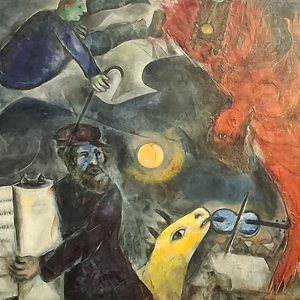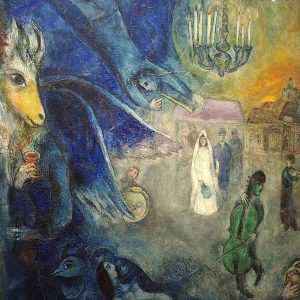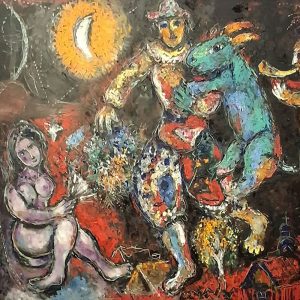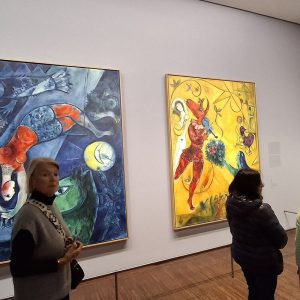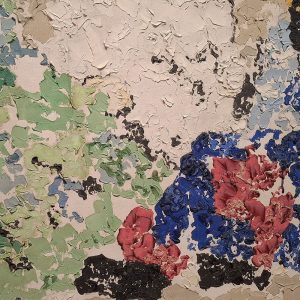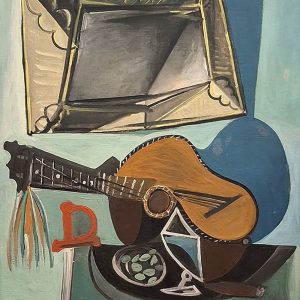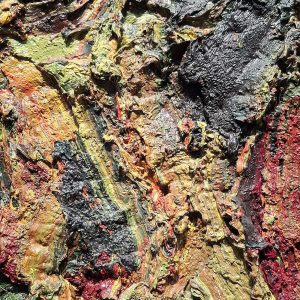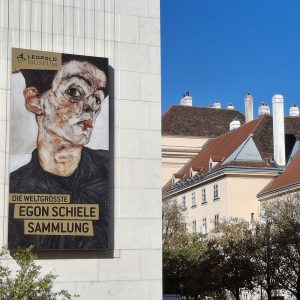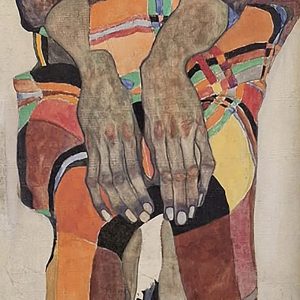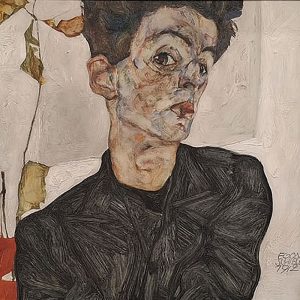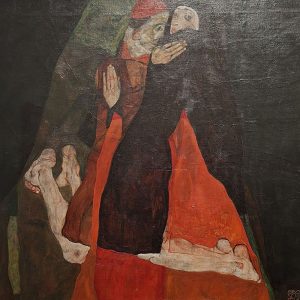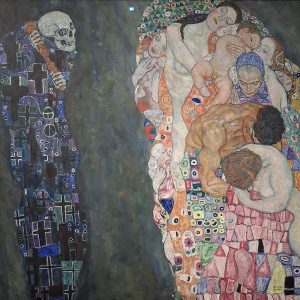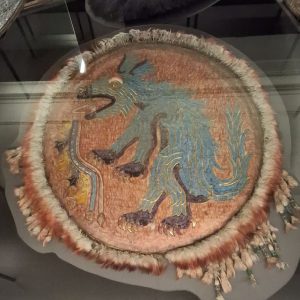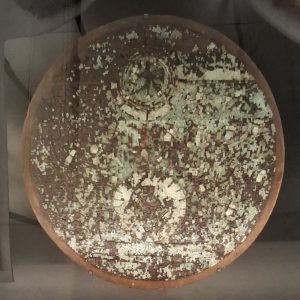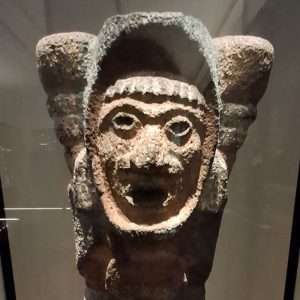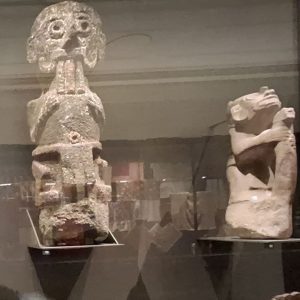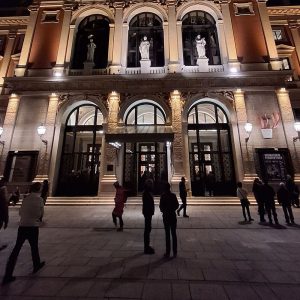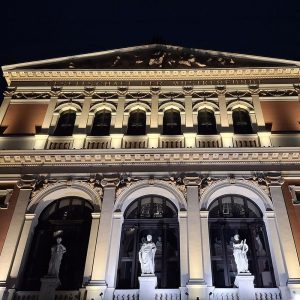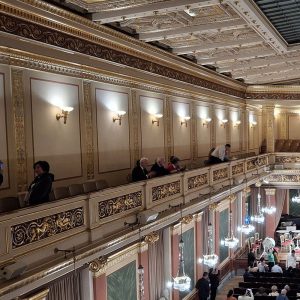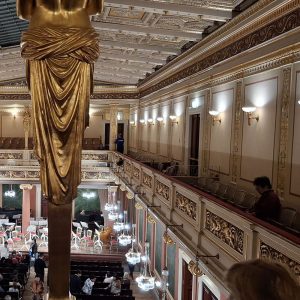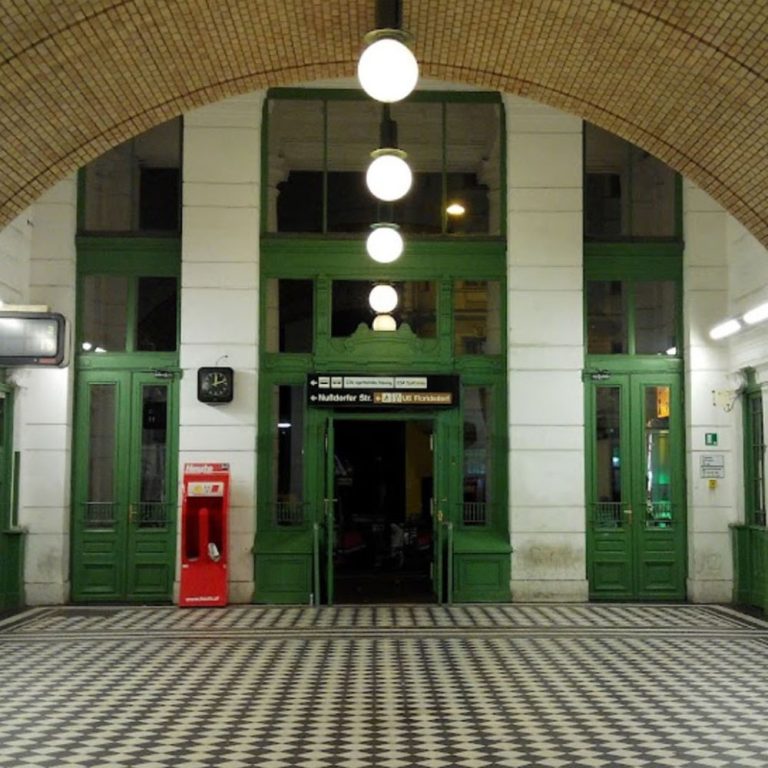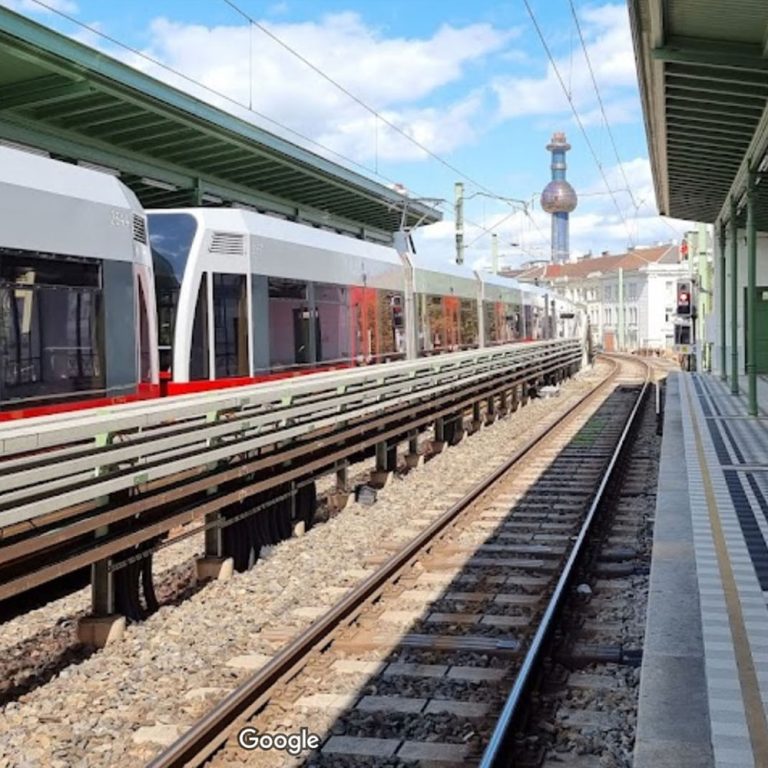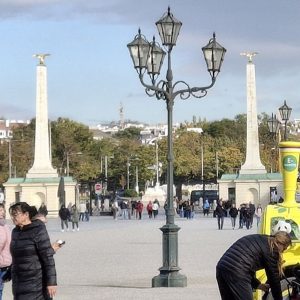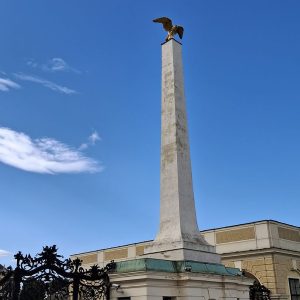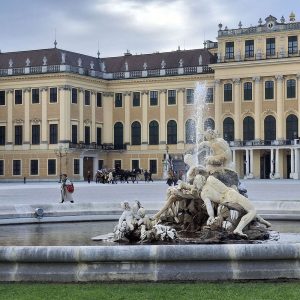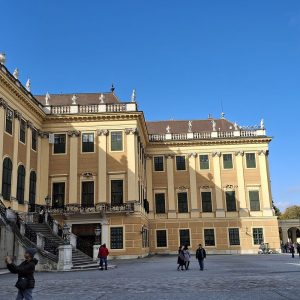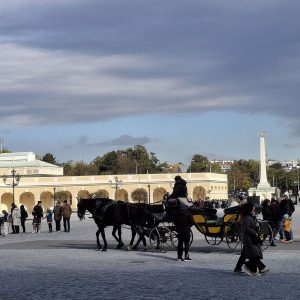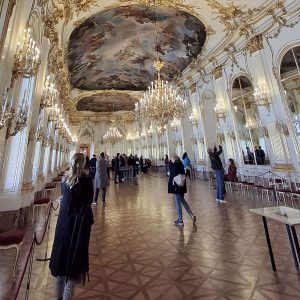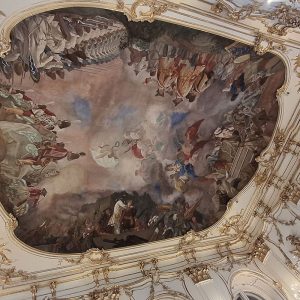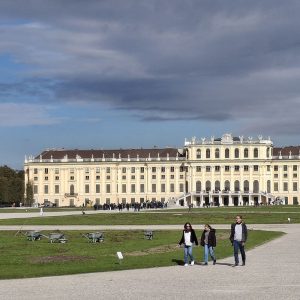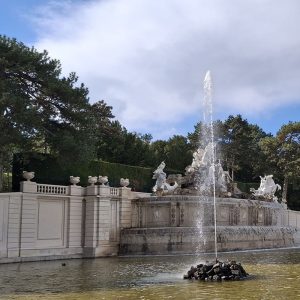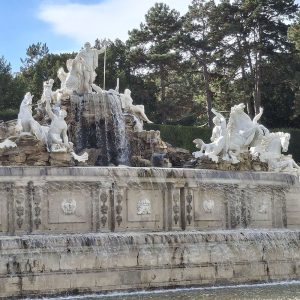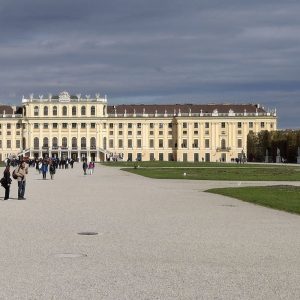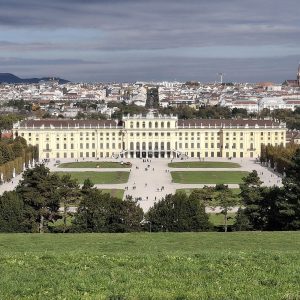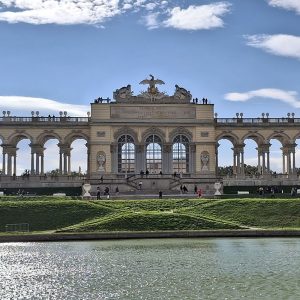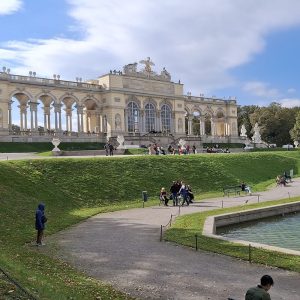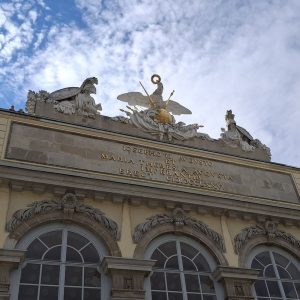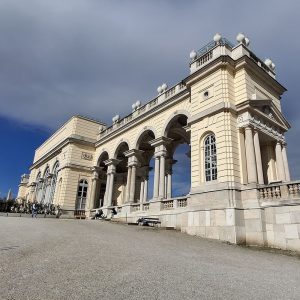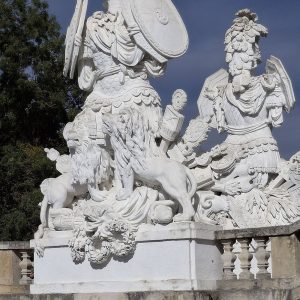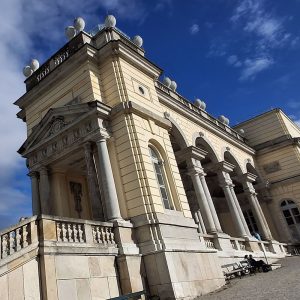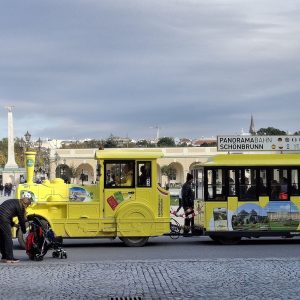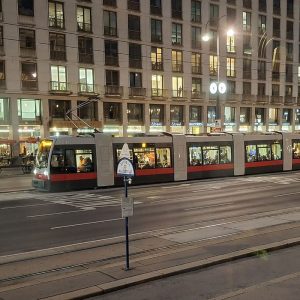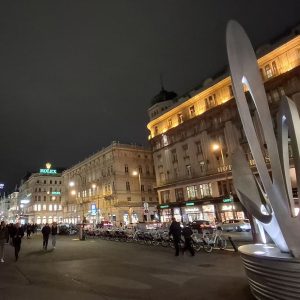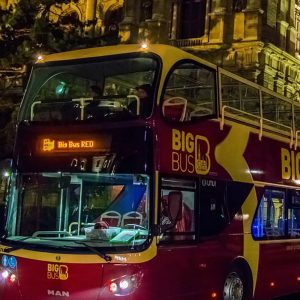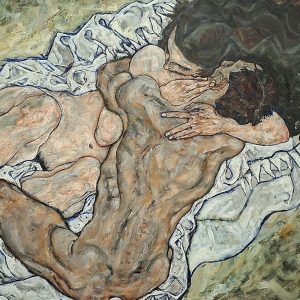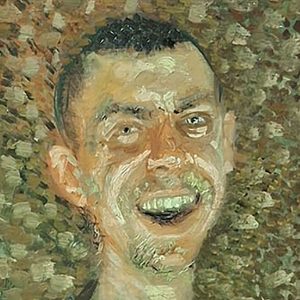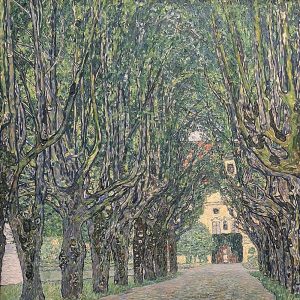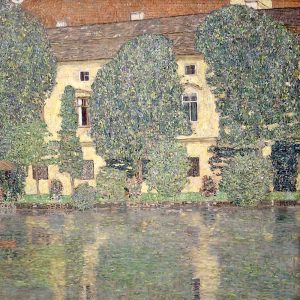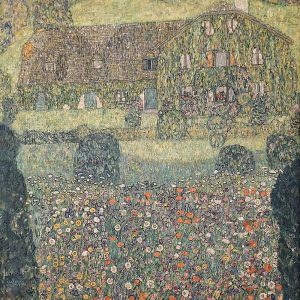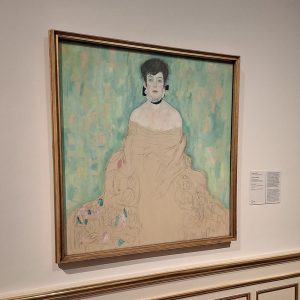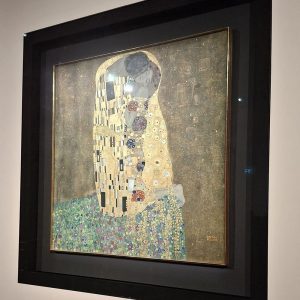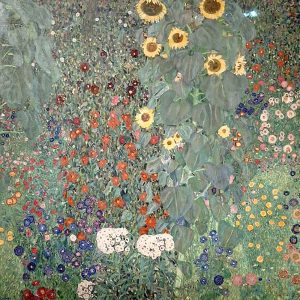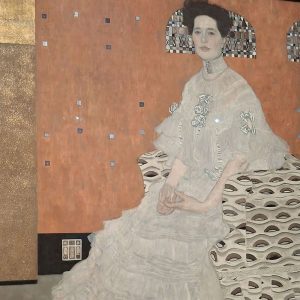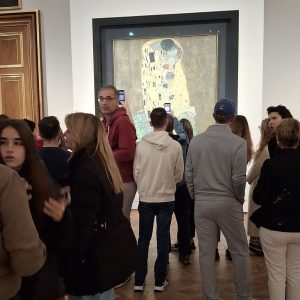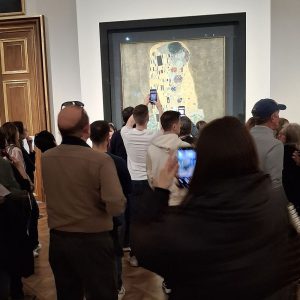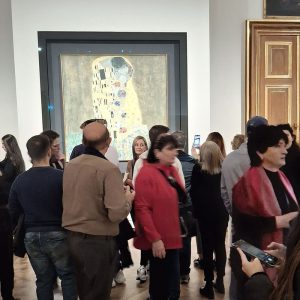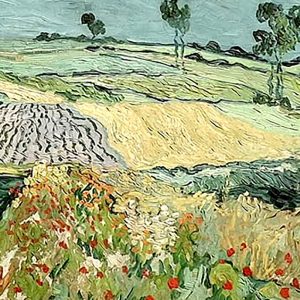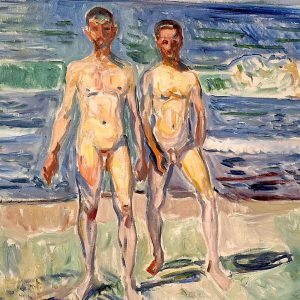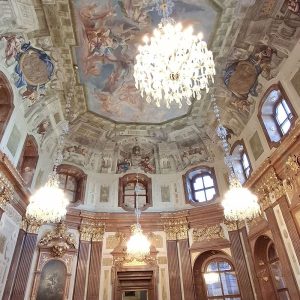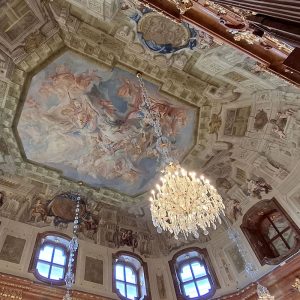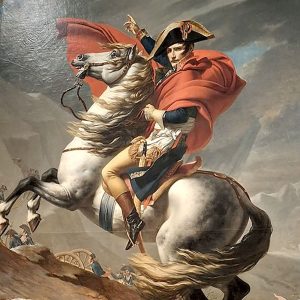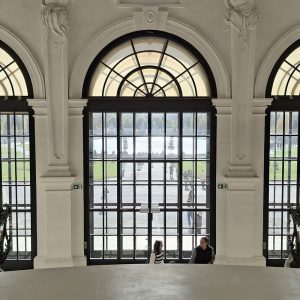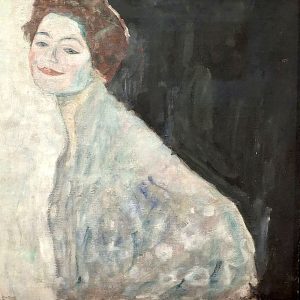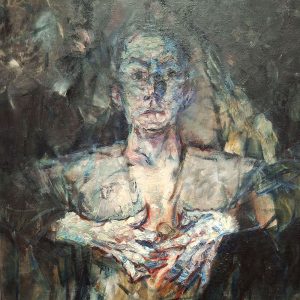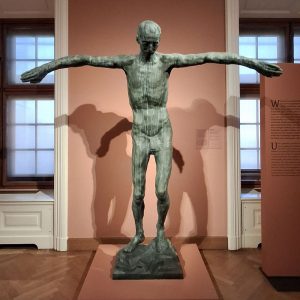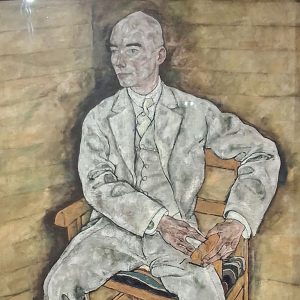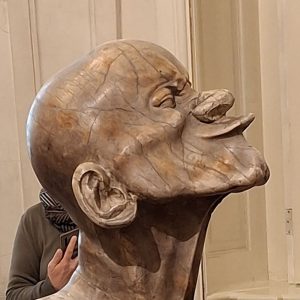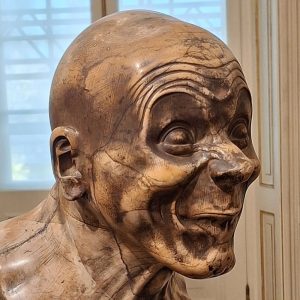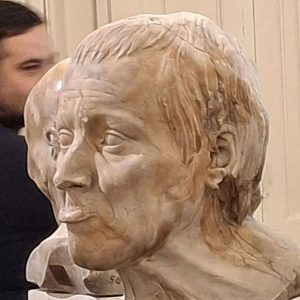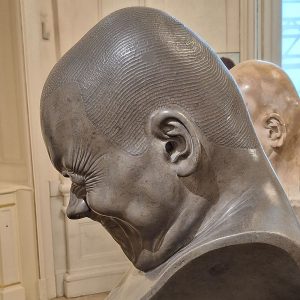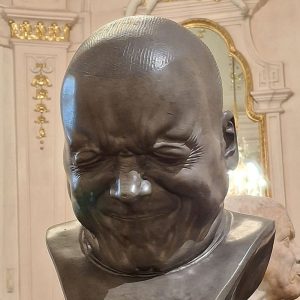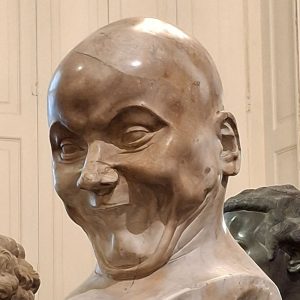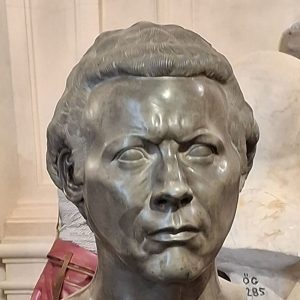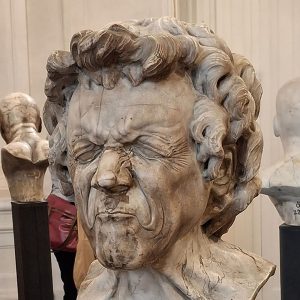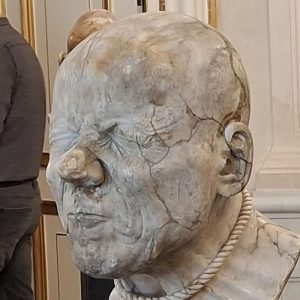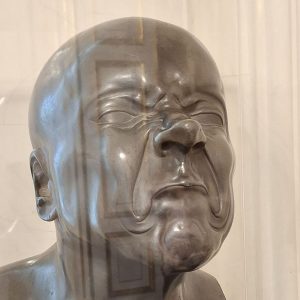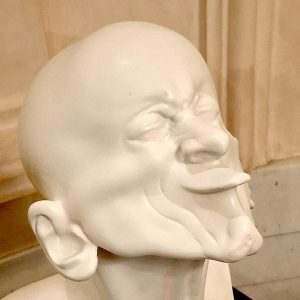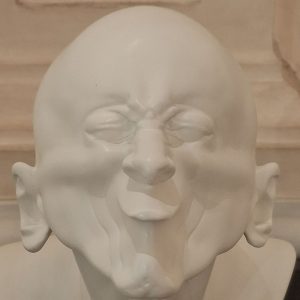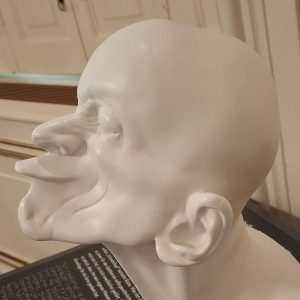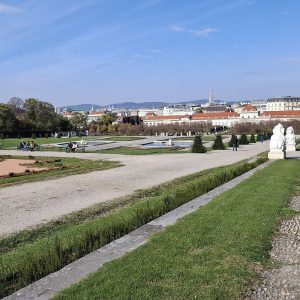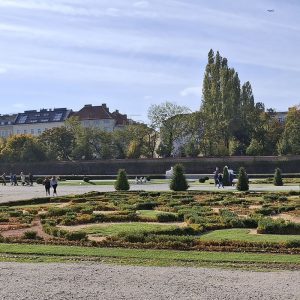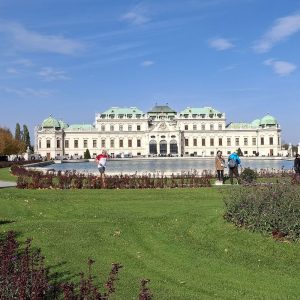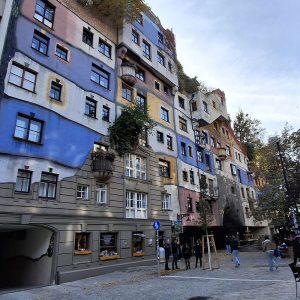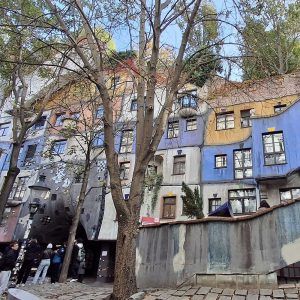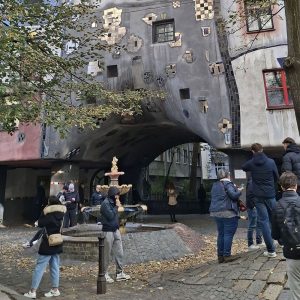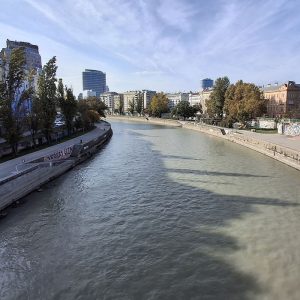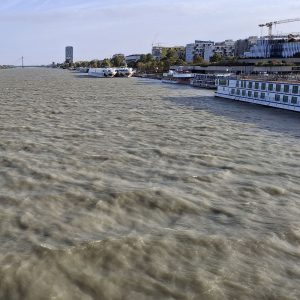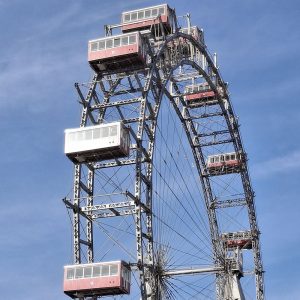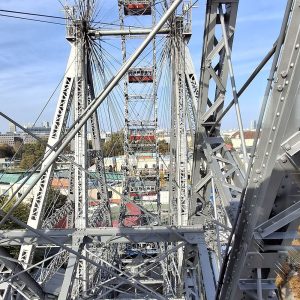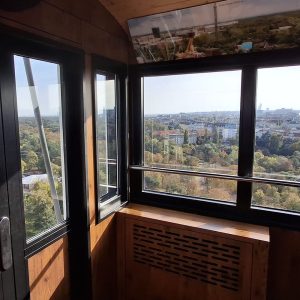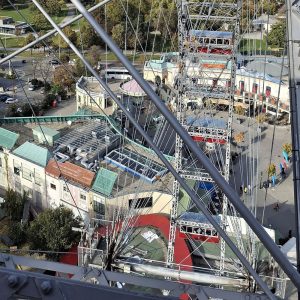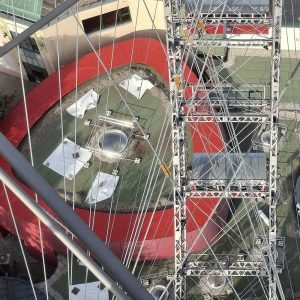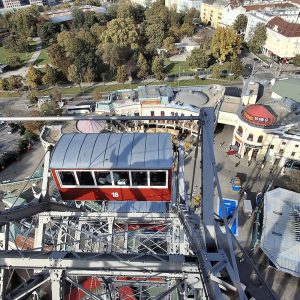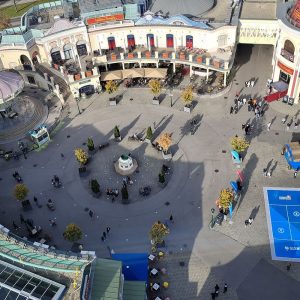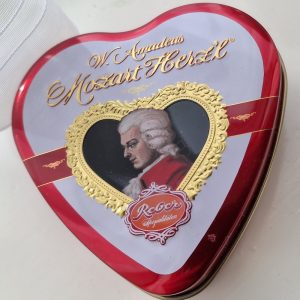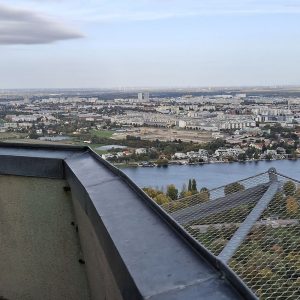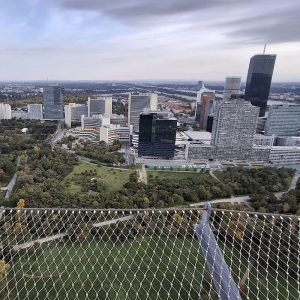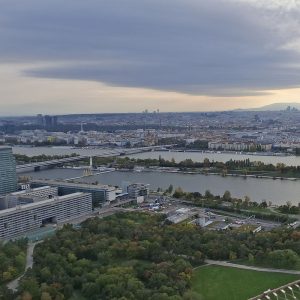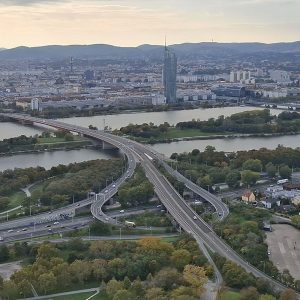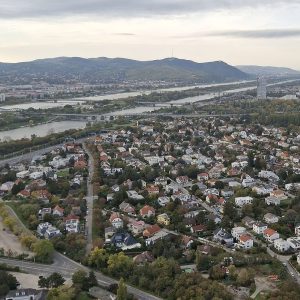Art & Opulence: Autumn in Vienna
Monday 14th October: Meticulously planned weeks in advance, I knew exactly where I had to be and how to get there. At Vienna Airport, I caught the CAT, the City Airport Train, to Wien Mitte. Stopping briefly for essential supplies at Interspar, I boarded the U4 to Friedensbrücke U-Bahn on the Donaukanal. It was dark, the streets were quiet, and it had begun to rain. It was a short walk to Liechtenstein Straße 90, my apartment in the elegant Alsergrund district, and home for the next few days.
Tuesday 15th October: I waited for Service ‘D’ at Augasse Straßenbahn Haltestelle, my Wien Mobil ticket already loaded onto my phone. This would be where most of my daily travels would commence over the next few days. The Straßenbahn took me directly to Burgring, the stop immediately adjacent to the Kunsthistorisches Museum. The Libra sun was shining, the sky an almost cloudless intense blue.
My schedule allowed two hours for this museum, but even before I stepped inside, I thought it may not be enough time. The neo-classic palatial immensity of the building alone was overwhelming. Beyond the entrance hall, a magnificent stairway leads to Canova’s ‘Theseus Slaying the Centaur’ under a stupendous painted ceiling. (I will see a lot of stupendous painted ceilings on this trip). From his plinth, the old Kaiser Franz Joseph watches the growing hordes of foreign visitors, me amongst them, come to gawp at the priceless treasures within.
The Picture Gallery is from the art collections of the House of Habsburg. One of the largest in the world, it is home to many of the top names, the best of the best, big-hitters including Titian, Veronese, Tintoretto, Rubens, Van Dyck, Van Eyck, Van der Weyden, Dürer, Cranach, Bruegel (the Elder), Vermeer, Rembrandt, Raphael, Caravaggio, Velázquez, Holbein, Poussin, Gainsborough, Canaletto and a whole bunch of other magnificent painters whose names I didn’t know even when the paintings were familiar. One bizarre painting stopped me in my tracks. It was by Otto van Veen (never heard of him), Persian Women exposing their bare fannies and arses to men on horseback. No? Me neither. It was a visual overload. Skipping past art by the greatest of the greats seemed sinful, almost blasphemous. One could spend a lifetime here, but there was more to see, and the clock was ticking.
Almost running through the gold and bejewelled collection of the Kunstkammer, I only briefly glimpsed the famous golden Saliera, a highly decorative pepper pot. It was ringed by admiring tourists. I pushed on, barely noticing the curiosities in bronze, wood, and precious stone. I ignored the timepieces but did linger at the superb tapestries for a second or two.
I had no intention of seeing the coin collection, the historical musical instruments, or the Imperial armoury, but that was where I found myself. Not lost but had to make my way through these seemingly never-ending halls, row upon row of ghostly suits of armour. The wooden floors creaked under my feet.
My head buzzing with sensory overload, and my allotted time almost expired, I decided to make for the exit via ancient Rome, Egypt and, inevitably, the gift shop.
Stepping back outside into the bright sunlight and cold blue sky was a pleasant relief from so much art. But there was more to follow.
The Secession Building was a short walk away and would be my next stop before lunch. I had read much about the Wiener Secession; the Viennese version of Art Nouveau, from the late 19th and early 20th century. Sadly, the busy modern road layout prevented a good view of the Secession Building. Nevertheless, it still sparkled jewel-like in the midday sun. Its canopy of golden leaves is just visible above the stark white walls. Its beautiful exterior ill-prepares the visitor for the disappointment within. An unexpected modern sculpture of a fallen astronaut on a lunar-like surface was an intriguing display. Other rooms exhibited works that didn’t grab my attention. I’d really only come to see Klimt’s Beethoven Frieze. A bizarre experience. The frieze is high up inside the exhibition room and so difficult to see. It would benefit from a platform giving the viewer better access to the images. The lower walls are blank, painted plain white. A portable CD player, perched on a chair, played a constant loop of Beethoven’s ‘Ode an die Freude’ over and over. Though probably one of the best pieces of poetry ever put to music, even I had heard enough after twenty minutes. I pitied the gallery attendants. Beethoven deserves better.
The early afternoon was warm and bright. The red canopies of the Cafe Museum caught my eye. That would do for my lunch break. ‘Sachertorte und Kaffee’ would fill the gap and provide that rite of passage to all first-timers in Vienna. It’s done now. I’ve done my touristic duty. Obligation met. I will never have to have another slice of Sachertorte. I thought of Angela, my sister, who would never make this trip as we had planned.
The friendly waiter pointed me in the general direction of Karlskirche, the next stop on my list.
It was a pleasant walk across the busy Resselpark to Karlskirche. People were out enjoying the Oktober sun, many having lunch in the park. I sat for a while on the rim of the pond, people-watching. The church interior is yet more in-your-face catholic baroque splendour, though sadly, an artistic installation of neon tubes spoiled the original beauty. I sat for a while, silent in the pews, devoid of all thought. A mother admonished her noisy child, thinking it was annoying to a contemplative man at prayer. I just smiled like a heathen then lit a candle. From the church roof, I had a wonderful view of the city. I could see the spire of Domkirche St. Stephan, my next stop on this beautiful, though tiring day
I had allowed twenty minutes for this walk, a chance to experience the busy city streets and shopping areas. It turned out to be busier than I expected, the journey taking far longer than twenty minutes. Perhaps I should have used my Wien Mobil app.
The cathedral’s striking exterior, with its zig-zag roof tiling and twin-headed eagle design, is unmissable once there’s a gap between the tall city buildings. The foot of the cathedral was heaving with tourists. Clearly, this place is a top attraction. Inside, it was dark, even foreboding. Already I was making comparisons with the pleasant ambience of Karlskirche. This place felt cold, medieval, and imposing. I’d paid to climb all 343 steps of the South Tower, and tired as I was, that was what I did. My prepurchased ticket also gave me the chance to tour the cathedral’s catacombs. A guided tour amongst the bones of the dead. Photos were not permitted. I’m not sure why.
One more exhibition before the journey back to Alsergrund. In a building near the cathedral, a display of paintings of bewigged noblemen in all their heraldic bling, medals, maps and family trees, gave an account of the history of the German order of Teutonic Knights. Here too, the floorboards creaked, echoing in the silent rooms. I was the only visitor.
It was getting late and there were still things to be done. I caught the U4 back to Friedensbrücke. The evening drawing in, I stopped only briefly at my apartment before one last venture out. I needed to stock up on provisions for the week. A mere five-minute walk away was my local Billa, a charming supermarket, part of a chain found throughout the city. Everything I needed and so much more.
The exhausting, though very successful, day was coming to an end. Over a glass of wine, I carefully studied my plans for tomorrow.
Wednesday 16th October: I waited at Augasse with the last of the morning commuters, my destination Burgring for the Spanish Riding School at Schloß Hofburg. The hourly training sessions begin at 10.00 a.m. daily and already the international tour buses were nose to tail. Despite the growing number of visitors at the palace, those attending the riding school session were relatively few and we were soon in our seats waiting for the show to commence.
The MC, dressed in her shiny riding boots and snug jodphurs, first in German then in impeccable English, proclaimed the start of the session. To a Strauss waltz, the first of the riders led in their mounts. It was soon clear to me that an hour of equine prancing about on sand was not my idea of entertainment. The arena was cold and the bench was hard. Leaning over the balustrade I hoped to see something of interest. A man with a bucket and brush cleared up the horse shit. I waited for the hour to pass. Photography is not permitted – it might spook the horses.
Outside in the sunshine, the session over, the horses were paraded through the crowd of gawping tourists, me amongst them, to their stables.
Barely five minutes from the Hofburg was the Albertina. A palatial setting for another art overdose. Just as with the Kunsthistorisches Museum the day before, I was exposed to many of the biggest names in art. This time it was mostly 20th century luminaries (take a breath): Monet, Picasso, Chagall, Magritte, Cézanne, Degas, Modigliani, Klimt, Vlaminck, Kirchner, Munch, Nolde, Kokoschka, Kandinsky, Malevich, (take another breath) Beckmann, Miró, Ernst, Giacometti, Braque, Léger, Baselitz, Kiefer, Lichtenstein, Richter, Schiele, Toulouse-Lautrec, and even a print of Mao by Andy Warhol, and a whole bunch of names I didn’t recognise. It was all so overwhelming. I stopped taking photographs so I could just enjoy the pictures. I heard that Dürer’s drawing of a hare, and his praying hands are kept here. I didn’t see them. Probably kept safe in the dark like ancient holy relics.
I had exceeded my allotted one hour, the time passed so quickly. There was far more at the Albertina than I expected so had to delay lunch. I had a date with Egon at the Leopold, which was the expected highlight of my Vienna visit.
The Leopold Museum is a stark white 21st-century edifice hidden away in Museumplatz (it took some finding!). A portrait of Egon Schiele was displayed near the stairway that led to the entrance.
The inside was as harsh and white as the exterior, clean and modern, the wooden floors silent underfoot. Mainly concerned with Viennese works from the early 20th century, Schiele, Klimt, and Kokoschka were the star exhibits. There were many other pieces by artists unknown to me, as well as displays of period furniture in a reconstructed interior. The woolly nude reclining on a Secession-era bench was particularly puzzling, but then this was also the era of Sigmund Freud. Maybe best to not take everything so seriously.
It was only as I was finalising my plans for this trip that I decided to include a flying visit to the Weltmuseum. It was just a step or two away from the Leopold and there were things in there especially dear to me. Art of a different kind, the ‘World’ Museum is a vast collection of artefacts from varying cultures throughout history. It is all housed in the Neue Burg – yet another baroque palace. I hadn’t intended to see every exhibition room but in searching for my objects of special interest, I think I probably did.
I was looking for the Mesoamerican collection, exhibits acquired after the Spanish conquest and sent to Europe in the 16th and 17th centuries. The most famous of these items was that green feathered headdress. Often known as ‘Montezuma’s Headdress’ there’s not a shred of evidence it was ever his. It’s a pale and sorry shadow of the magnificent thing it must once have been. The iridescence of the long green feathers of the Resplendent Quetzal now faded and moth-eaten. Still, it was a joy to see as were the other Aztec items; feather art, turquoise mosaics, stone and clay sculptures, many long-known to me only as pictures in books. Here they all were, for real, right in front of me. I wonder, would Mexico like to have them back?
Exhausted, I enjoyed the tram ride back to Augasse. A chance to relax and recollect the things I had seen. The hour at the Spanish Riding School felt like an age away, and though I was on my way back to my apartment, the day was not yet over.
Right from the start of my plans, I was unsure about booking a place at this event. But this is Vienna, the city of Mozart, I thought, and so a musical evening it would be!
Evening wear, the website said, no trainers, t-shirts, and jeans. And so I dressed for the occasion in a tweed jacket and my Open Univerisity tie, feeling very self-conscious and thinking I was venturing out of my depth.
Augasse to Schwarzenbergplatz, the 20-minute tram ride brought me to the Musikverein in plenty of time for the eight o’clock start. The building, illuminated for the evening, looked magnificent, the crowds milling about the entrance. My misplaced apprehension ramped up further. It was when I stepped into the entrance hall that I felt something was not quite right – that maybe I had been misled. The jostling crowd (by which I mean ‘the audience’) were becoming impatient and unruly as the event staff tried to guide them to their relevant stairways and entrances, according to the ticket price. I looked around. Whatever happened to the dress code? T-shirts, vests, denim cut off at the knees, flip-flops. My heart sank. Feeling over-dressed, I was guided to the cheap seats with the uncouth and unwashed.
I had purposefully selected a seat at the end of the row should I decide I needed a rapid escape. Even this let me down – there were bars in the way. Ill-at-ease, I waited for the music to start, the orchestra already seated and tuned up. The lights dimmed slightly. The music played. A selection of mostly well-known classical pieces, easy on the ear, Strauss, Mozart, Vivaldi – all the usual suspects. It should have been a pleasant evening. After a while, a middle-aged man in my row decided he needed to help conduct the orchestra, his arms waving in what he thought was relevant to the music. He’ll stop in a minute, I thought, his companions will put him straight. They didn’t, he didn’t stop. They seemed to encourage his idiocy and were soon laughing and joking. Drunken simpletons from somewhere in Eastern Europe, I concluded. Angry voices hissed at them to be quiet to no avail. I had decided I had had enough and would escape this situation at the interval. However, there was more hell to endure. No longer aware of what music was playing, a round of applause from those in the best seats signalled a change of pace – the Radetzky March. A very popular piece now hated by me. It seemed to signal permission for the entire audience to hand-clap and foot-stomp in various parts of the music. Horrified, audience participation the worst possible theatre experience, I prayed for the Interval to come soon.
As I collected my coat and was leaving the auditorium, I heard an English voice complaining to the theatre staff. I joined in to support his complaint but also to demonstrate my own dissatisfaction by leaving mid-show.
Out of my depth? I couldn’t have been more wrong. I went home and opened a bottle of wine. A lesson learned.
Thursday 17th October: Mid-morning and the weather was still on my side as I ambled past Billa (mein lieblings Supermarkt) on my way to Nußdorfer Straße to catch a train south to Schloß Schönbrunn.
Schönbrunn was built as a summer retreat for the Hapsburgs to escape the noise and dirt of the city, it seems the city has caught it up.
Look for the eagle gateposts, I thought as I left the tram stop, that’s the way in. I could hardly miss it! The tour buses were already disgorging their contents of eager visitors from around the globe, all armed with smartphones. As I entered the palace grounds the acid-yellow Panoramabahn rattled past. My heart sank at this display of tasteless tourist tat and I wondered what other horrors my day at Schönbrunn had waiting for me.
I stood in the slow-moving line with the other visitors, eventually collecting my audio guide. I set the audio guide to English and followed the flow of bodies into the palace.
Opulence overload – the palatial splendour has to be seen to be believed. Those ceilings! Then into the private family rooms, and the mirror room where the child Mozart broke with protocol and hugged the Empress Maria Theresa after she asked for an encore.
The painting of the Spanish Riding School at the Hofburg intrigued me. How grand the artist had made it seem. So much higher than the horse-dung sandpit I had seen a couple of days before.
Back outside in the autumn sunshine, I strolled through the palace gardens. Too late in the year to be at their best. They are now a training ground for fashion-conscious fitness freaks in branded joggers. The Gloriette was my next goal. It stood on the high ground, overlooking the palace. Before heading out to the Gloriette, I made my way to the Neptune Fountain, a grand folly, built as if a Roman ruin.
A steeper climb than it looked, or maybe I’m just getting old, the path meandered, eventually reaching a grand water feature. Obviously built to reflect the Gloriette standing at the top of the hill. Built as a private retreat for Sisi (Empress Elisabeth), the Gloriette is now a cafe serving Sachertorte to riff-raff tourists rabble from around the world.
It is said, that Sisi preferred the old Hofburg Palace over Schönbrunn. I saw little of Hofburg but I think I know what she meant. I wouldn’t want to live here either.
Late afternoon back at my apartment in Alsergrund, there was little time to relax. I had to be back in the city at 6:30 p.m. at the Vienna State Opera. No, thankfully not another night of sing-a-long-a-Wolfgang. This was the meeting place for the evening bus tour of Vienna I had arranged. I felt, after a tiring day at the palace, that sitting on a bus staring blankly out of the window would be a welcome way to wind down. In truth, it was a bit of a disappointment. The bus was cold. The audio guide malfunctioned, and you really don’t see that much from a bus at night on Vienna’s busy roads. So, dear reader, if ever you find yourself in this city, I wouldn’t recommend a night bus tour. I saw just as much from the Staßenbahn on my way home.
Friday 18th October: My 68th birthday. Stepping onto the tram at Augasse, a young student looks my way and smiles, then offers me her seat. The youth of Vienna are generally respectful and polite to the elderly and infirm. I, of course, returning her smile, declined, as I am neither elderly nor infirm. A few stops down the line the tram emptied of its students and I had a choice of seats. Another bright, clear day. I watched from the tram window as the now familiar landmarks, public buildings, parks and palaces passed by as I made my way through the city centre to Schloß Belvedere.
The Viennese seem never to have enough palaces. This one (or rather two) was built by Prince Eugene of Savoy, a significantly well-heeled general and diplomat in the Habsburg Court. Upper Belvedere and Lower Belvedere are connected by a vast ornamental garden which, I expect, is a beautiful sight at its summer best. This autumn day, even under the bright sun, its lustre sadly lacked. Other treasures awaited me in Upper Belvedere.
The visiting hordes were directed to use the tradesmen’s entrance at the back of the palace, where renovation was taking place. There, we were kept waiting under the scaffolding until our allotted time slot became available. The clock-watching jobs-worth on the door did not permit the overeager tourist early entrance by so much as a nano-second.
This would be my final immersion in the great art of Vienna and I knew I was in for a fabulous experience. Perhaps the Beledere’s two best-loved and most famous paintings are The Kiss by Gustave Klimt and Napoleon at the Great St. Bernhard Pass by Jacques Louis David and, sure enough, both these paintings had drawn the biggest crowds.
There was something else I was eager to see – the bizarre, so-called ‘Character Heads’ in marble and bronze by Franz Xaver Messerschmidt, a collection of life-size sculpted heads displaying strange facial contortions. There is no explanation. No one knows why Messerschmidt created these wonders. That only makes them even more fascinating.
I was surprised to find so many works by Klimt here, as well as yet more paintings by Egon Schiele and even a Van Gogh landscape. Looking up, I saw the last of my stupendously painted ceilings.
Outside, I detoxed from the arty over-indulgence, strolling around the gardens in the cold sunshine. The half-hour tram ride from Schloß Belvedere to Hetzgasse gave me time to relax and reflect. The day was slipping away and I had still so much I wanted to do but first I needed to eat. Alighting at Hetzgasse, the walk along Löwengasse brought me to the local Billa. I nipped in for a sandwich, a selection of unhealthy snacks and a bottle of Apfelsaft – lunch sorted.
I was making for the Hundertwasser Village, a collection of shops and apartments designed by the artist Friedensreich Hundertwasser in the 1990s. His concept was in stark contrast to both the modern and baroque architecture of Vienna. His designs use irregular colourful organic shapes and encourage the growth of natural vegetation in and between structures. Popular with tourists too!
Crossing the Donaukanal, it seemed to take far longer than the planned 20-minute walk from Hundertwasser to Prater Park. At last, the famous Riesenrad loomed above the trees. I am not amused by an amusement park. They do not amuse me. Yet, there I was looking up at a colossal Ferris wheel with every intention of climbing aboard. So what’s so special about this particular wheel?
Harry Lime: ‘You know, I never feel comfortable on these sort of things. Victims? Don’t be melodramatic. Look down there. Tell me. Would you really feel any pity if one of those dots stopped moving forever?’
Exit via the gift shop, I bought a tin of Mozart Hearts for Ang.
Leaving the park, again on foot and much further than expected, I crossed the choppy brown Danube and Donauinsel, the river cruise boats safely moored. From afar, I could see my destination, the Danube Tower, rising above the distant trees, the modern business park and residential tower blocks. This was it, the last stop on my Viennese whirl.
Despite the threat of unrest from the unhappy right-leaning patriots, I had, at least so far, encountered nothing of a political nature. That was about to change. Stepping into the lift, I was greeted by the uniformed lift attendant. His job must be the most boring and lonely of jobs. Up and down all day long, often in an empty lift. Clearly, this time of year is slow, and today, I was one of very few liftees. Travelling skyward and with no way out, he decides to express his views on the current wave of immigration into Austria. How high is this tower? I wondered.
That was my birthday. Time to go home. From the tower, I caught a bus with the local homeward-bound students to the shiny Neue Donau U-Bahn station. Then the U6 to Nußdorfer, crossing the Danube for the last time. One last night in my apartment on Liechtenstein Straße. Bag packed for the morning. The familiar walk to Friedensbrücke, the U-Bahn to Wien Mitte, The CAT to the airport and an afternoon flight to Manchester where my car was waiting for the drive home.
A perfect plan, I thought, executed perfectly.
